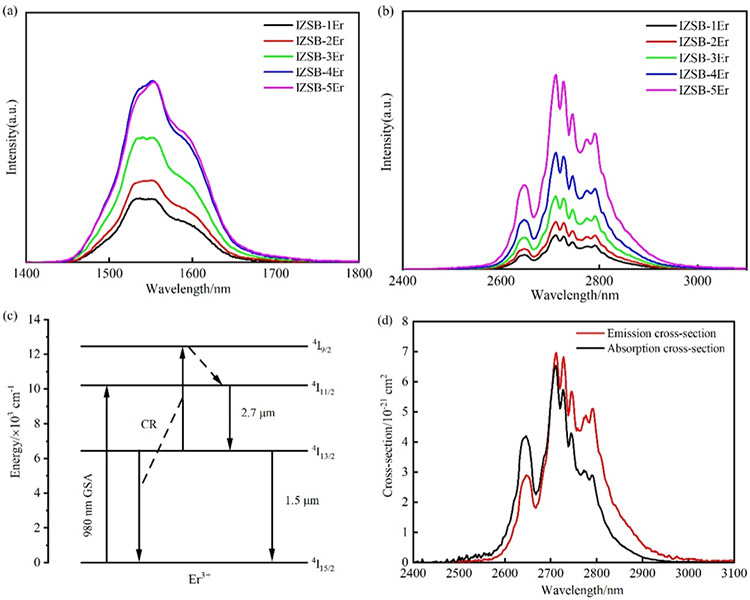
Erbium-Doped Fluoroindate Glass Shows Promise for Mid-IR Lasing
A research team from the Xi’an Institute of Optics and Precision Mechanics of the Chinese Academy of Sciences has revealed the spectroscopic properties of Er3+-doped fluoroindate glasses. Tests showed that fluoroindate glass is an attractive host for mid-infrared lasers and as a gain medium for optical amplifier applications, due to its extended fluorescence lifetime and larger emission cross-section than that of ZBLAN (ZrF4-BaF2-LaF3-AlF3-NaF), a fluorozirconate glass.
Mid-infrared lasers have numerous applications, including in the military and medical fields. Laser glass, which the researchers describe as the “core material” of mid-infrared lasers, affects the development of the performance of fiber lasers. Currently, the common 2.7-μm fiber laser usually uses erbium (Er) doping. This places a high requirement on the matrix glass to enable high performance.

A research team from the Xi'an Institute of Optics and Precision Mechanics of the Chinese Academy of Sciences has revealed the spectroscopic properties of Er3+-doped fluoroindate glasses. Test revealed that the maximum fluorescence lifetime of fluoroindate glass was 7.09 ms at 2 mol% erbium doping — more than the maximum fluorescence lifetime of ZBLAN glass. Courtesy of XIOPM.
The research team used Raman, transmission, and fluorescence spectroscopies, as well as fluorescence decay curve analysis and differential scanning calorimetry to study the erbium-doped glass. Fluoroindate glass is considered an attractive fiber matrix material, due to its lower phonon energy, higher infrared transmittance, wider transmittance ranges, and better resistance to hydrolysis than that of fluoride glass.
The researchers tested samples of fluoroindate glass with different erbium-doped concentrations prepared in a glove box. They found that the phonon energy of fluoroindate glass was lower than that of both ZBLAN and fluoroaluminate glasses. In contrast to fluoroindate glass, the researchers said, ZBLAN, though considered relatively mature in its usage, offers poor resistance to deliquescence, as well as poor thermal conductivity.
Under the excitation of a 980-nm laser, the team obtained strong luminescence of 1.5 μm and 2.7 μm in the mid-infrared region. When team members increased the doping concentration to 5 mol%, the luminescence intensity at first increased. Then, with the increase of doping concentration, the luminescence intensity did not increase. This was due to the fluorescence quenching caused by the increase of concentration, the researchers said.
At the completion of tests, the maximum fluorescence lifetime of fluoroindate glass was 7.09 ms at 2 mol% erbium doping — more than the maximum fluorescence lifetime of ZBLAN glass, which is 6.49 ms, the researchers said.
The researchers additionally calculated the emission cross-sectional area at 2.7 μm. The maximum excited cross-sectional area was 6.95 × 10-21 cm2 at 2 mol% erbium doping. This result was also higher than ZBLAN glass.
“Fluorescence lifetime and stimulated emission cross section are the key indicators to determine whether the gain material is suitable for laser output,” said She Jiangbo, who led the research team.
The research was published in the Journal of Rare Earths (https://doi.org/10.1016/j.jre.2021.05.011).
Published: September 2021